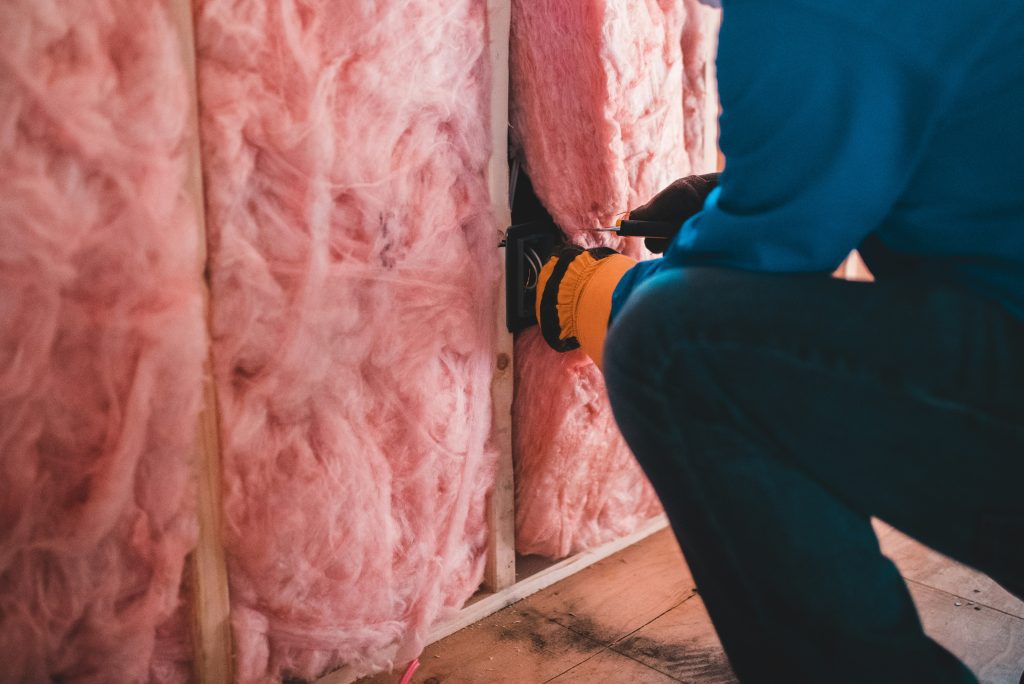Understanding one’s home energy usage is the initial step towards improving energy efficiency. One should begin by conducting an energy audit to identify areas of energy wastage. This can be accomplished by employing a professional energy auditor or utilising DIY tools such as energy monitors and thermal leak detectors.
Once a clear picture of energy consumption is established, one can make informed decisions about reducing it. Another method to comprehend home energy usage is by examining utility bills. By analysing energy consumption patterns over time, one can identify trends and pinpoint areas for improvement.
For instance, if one notices electricity bill increases during specific months, one can investigate the causes and take appropriate measures to address the issue. Understanding home energy usage is crucial for implementing effective energy-saving measures and reducing one’s carbon footprint.
Summary
- Understanding your home’s energy usage is the first step to making it more energy-efficient. Consider conducting an energy audit to identify areas of improvement.
- Implementing energy-efficient appliances and lighting can significantly reduce your home’s energy consumption. Look for appliances with high energy efficiency ratings and switch to LED lighting.
- Insulating and sealing your home is crucial for maintaining a comfortable indoor temperature and reducing energy waste. Consider adding insulation to your walls, floors, and attic, and sealing any air leaks.
- Utilising smart home technology, such as programmable thermostats and smart lighting systems, can help you manage and reduce your energy usage more effectively.
- Incorporating renewable energy sources, such as solar panels or wind turbines, can help you generate your own clean energy and reduce your reliance on traditional power sources.
- Conserving energy through lifestyle changes, such as adjusting your thermostat settings, using energy-efficient cooking methods, and reducing water usage, can make a significant impact on your home’s energy consumption.
- Eco-friendly home improvements and renovations, such as installing energy-efficient windows and doors, using sustainable building materials, and incorporating green design principles, can further enhance your home’s energy efficiency and environmental impact.
Implementing energy-efficient appliances and lighting
One of the most effective ways to reduce your home’s energy consumption is by replacing old, inefficient appliances with energy-efficient models. Look for appliances with the Energy Star label, which indicates that they meet strict energy efficiency guidelines set by the Environmental Protection Agency. Energy-efficient appliances not only consume less energy but also perform better, saving you money in the long run.
In addition to upgrading your appliances, you can also make a significant impact on your home’s energy usage by switching to energy-efficient lighting. Replace traditional incandescent bulbs with LED or CFL bulbs, which use significantly less energy and last much longer. You can also install motion sensors and timers to control lighting usage and reduce unnecessary energy consumption.
By implementing energy-efficient appliances and lighting, you can make a substantial difference in your home’s overall energy efficiency.
Insulating and sealing your home

Proper insulation and sealing are essential for maintaining a comfortable indoor environment and reducing energy waste. Insulation helps to keep your home warm in the winter and cool in the summer by preventing heat transfer through walls, floors, and ceilings. By insulating your home, you can reduce the need for heating and cooling, leading to lower energy bills and reduced environmental impact.
In addition to insulation, sealing air leaks is crucial for improving your home’s energy efficiency. Common areas where air leaks occur include windows, doors, and ductwork. Use weather stripping and caulking to seal gaps and cracks around these areas, preventing warm or cool air from escaping and reducing the workload on your HVAC system.
By insulating and sealing your home, you can create a more comfortable living environment while significantly reducing your energy consumption.
Utilising smart home technology
| Metrics | Data |
|---|---|
| Energy Savings | 15% reduction in energy usage |
| Security | 30% decrease in burglary incidents |
| Convenience | 20% time saved on daily tasks |
| Cost Savings | 25% decrease in utility bills |
Smart home technology offers innovative solutions for managing and reducing your home’s energy usage. Smart thermostats, for example, allow you to control your heating and cooling systems remotely and set schedules based on your daily routine. This can help you avoid unnecessary energy consumption when you’re away from home or asleep, leading to significant energy savings.
Another way to utilise smart home technology is by installing smart lighting systems that can be controlled and automated through a smartphone or voice commands. This allows you to adjust lighting levels and schedules to match your needs, reducing energy waste and lowering your electricity bills. Additionally, smart power strips and outlets can help you monitor and control the energy usage of individual devices, ensuring that they are not consuming power when not in use.
By incorporating smart home technology into your household, you can optimise your energy usage and contribute to a more sustainable living environment.
Incorporating renewable energy sources
Incorporating renewable energy sources into your home can significantly reduce your reliance on traditional fossil fuels and lower your carbon footprint. Solar panels are a popular choice for generating clean, renewable electricity from sunlight. By installing solar panels on your roof or property, you can harness the power of the sun to produce electricity for your household, reducing your dependence on grid-supplied power.
Another renewable energy option to consider is wind turbines, which can be installed on your property to generate electricity from wind power. While this may not be feasible for every home, it can be a viable option for properties with sufficient wind resources. Additionally, geothermal heat pumps utilise the constant temperature of the earth to provide heating, cooling, and hot water for homes, offering a sustainable alternative to traditional HVAC systems.
By incorporating renewable energy sources into your home, you can reduce your environmental impact and contribute to a cleaner, more sustainable energy future.
Conserving energy through lifestyle changes

Making simple lifestyle changes can have a significant impact on reducing your home’s energy consumption. For example, adjusting your thermostat by just a few degrees can lead to substantial energy savings without sacrificing comfort. Additionally, using appliances efficiently by running full loads of laundry and dishes, air-drying clothes, and unplugging electronics when not in use can help conserve energy and lower your utility bills.
Another way to conserve energy through lifestyle changes is by being mindful of water usage. Fixing leaks, taking shorter showers, and installing water-saving fixtures can reduce both water and energy consumption. Furthermore, incorporating habits such as using natural light during the day, cooking efficiently, and embracing outdoor activities can contribute to overall energy conservation in your household.
By making conscious choices in your daily routines, you can play a significant role in reducing your home’s energy usage.
Eco-friendly home improvements and renovations
When considering home improvements and renovations, opt for eco-friendly materials and practices that promote sustainability and energy efficiency. For example, choose low-VOC paints and finishes to improve indoor air quality while reducing harmful emissions. Additionally, consider using sustainable building materials such as bamboo flooring, reclaimed wood, or recycled glass countertops to minimise environmental impact.
Another eco-friendly approach to home improvements is incorporating passive design principles that maximise natural light and ventilation while minimising the need for artificial heating and cooling. This can include strategic window placement, shading elements, and thermal mass to regulate indoor temperatures without relying heavily on mechanical systems. Furthermore, consider installing green roofs or rainwater harvesting systems to manage stormwater runoff and reduce water consumption.
In conclusion, understanding your home’s energy usage is essential for implementing effective strategies to improve its efficiency. By incorporating energy-efficient appliances and lighting, insulating and sealing your home, utilising smart home technology, incorporating renewable energy sources, conserving energy through lifestyle changes, and embracing eco-friendly home improvements and renovations, you can create a more sustainable living environment while reducing your carbon footprint. Making these changes not only benefits the environment but also leads to long-term cost savings and a healthier home for you and your family.
If you’re looking to maximise savings on home energy usage, you may want to check out the article “Building for the Future: Sustainable House Designs that Promote Eco-Friendly Living” on Eco Friendly Home and Garden. This article discusses innovative and eco-friendly house designs that can help reduce energy consumption and lower utility bills. It’s a great resource for anyone interested in creating a more sustainable and energy-efficient home.
FAQs
What are some effective ways to maximise savings on home energy usage?
Some effective ways to maximise savings on home energy usage include using energy-efficient appliances, improving insulation, sealing air leaks, using a programmable thermostat, and being mindful of energy usage habits.
How can using energy-efficient appliances help in maximising savings on home energy usage?
Energy-efficient appliances consume less energy, resulting in lower energy bills. Look for appliances with the Energy Star label, which indicates that they meet strict energy efficiency guidelines set by the government.
What are some ways to improve insulation in a home to maximise energy savings?
Improving insulation in a home can help maximise energy savings by reducing heat loss in the winter and heat gain in the summer. This can be achieved by adding insulation to the attic, walls, and floors, as well as sealing any gaps or cracks where air can escape.
How can sealing air leaks contribute to maximising savings on home energy usage?
Sealing air leaks in a home can prevent warm or cool air from escaping, reducing the need for heating and cooling, and ultimately lowering energy bills. Common areas for air leaks include windows, doors, and ductwork.
What is the benefit of using a programmable thermostat in maximising savings on home energy usage?
A programmable thermostat allows homeowners to set specific temperatures for different times of the day, reducing energy usage when no one is home or during sleeping hours. This can lead to significant savings on heating and cooling costs.
How can being mindful of energy usage habits help in maximising savings on home energy usage?
Being mindful of energy usage habits, such as turning off lights and appliances when not in use, using natural light during the day, and adjusting the thermostat to a moderate temperature, can all contribute to reducing energy consumption and lowering energy bills.


